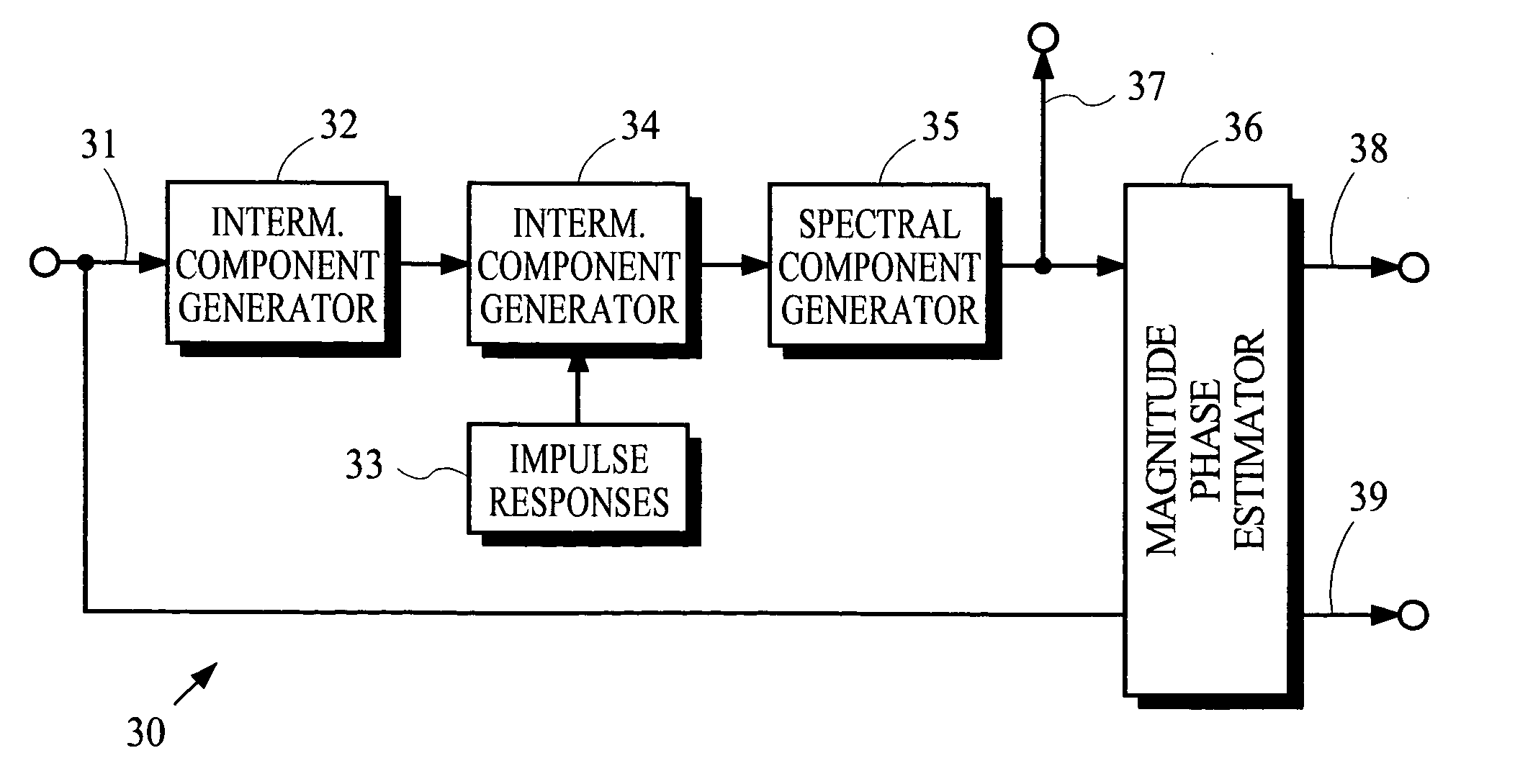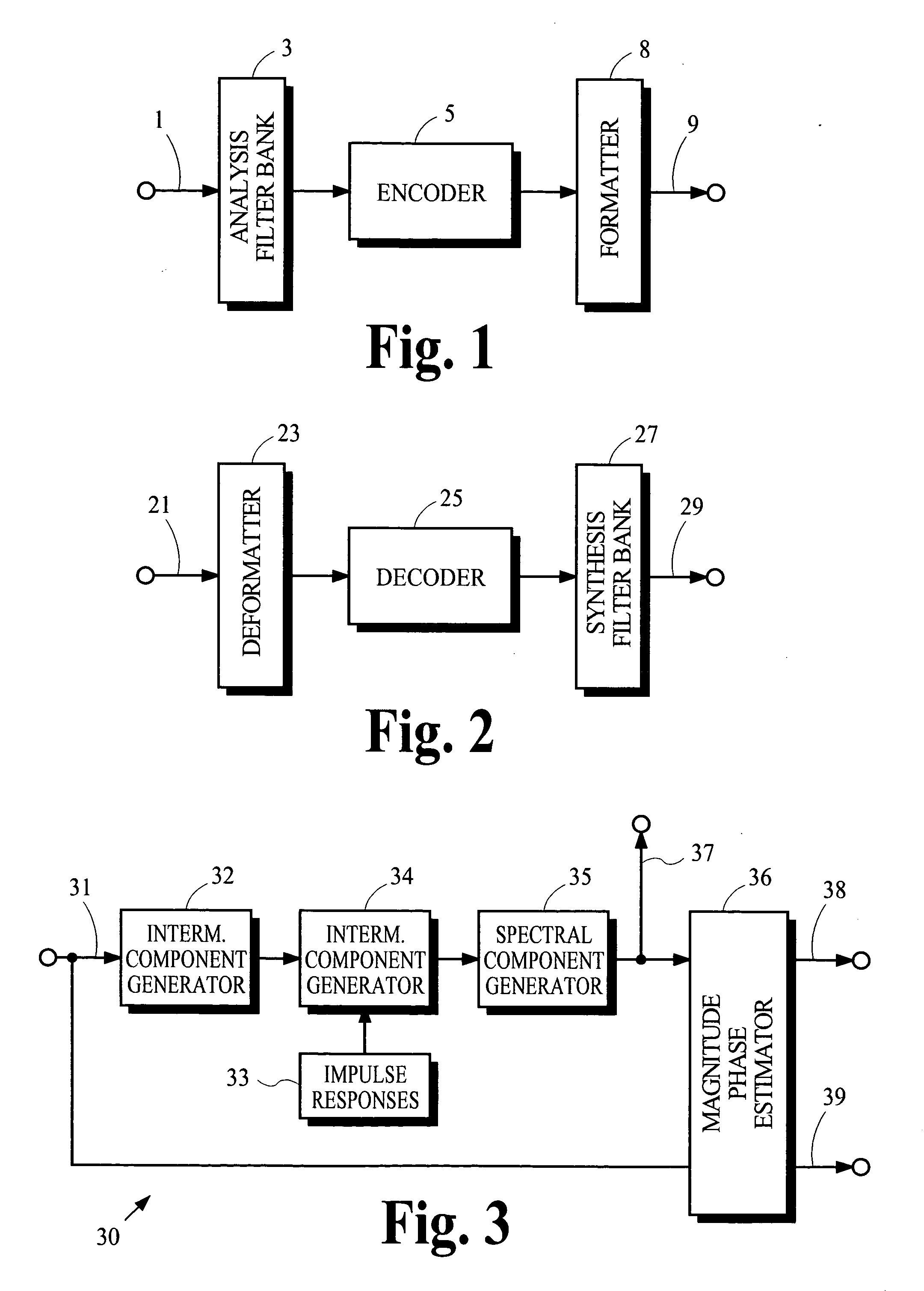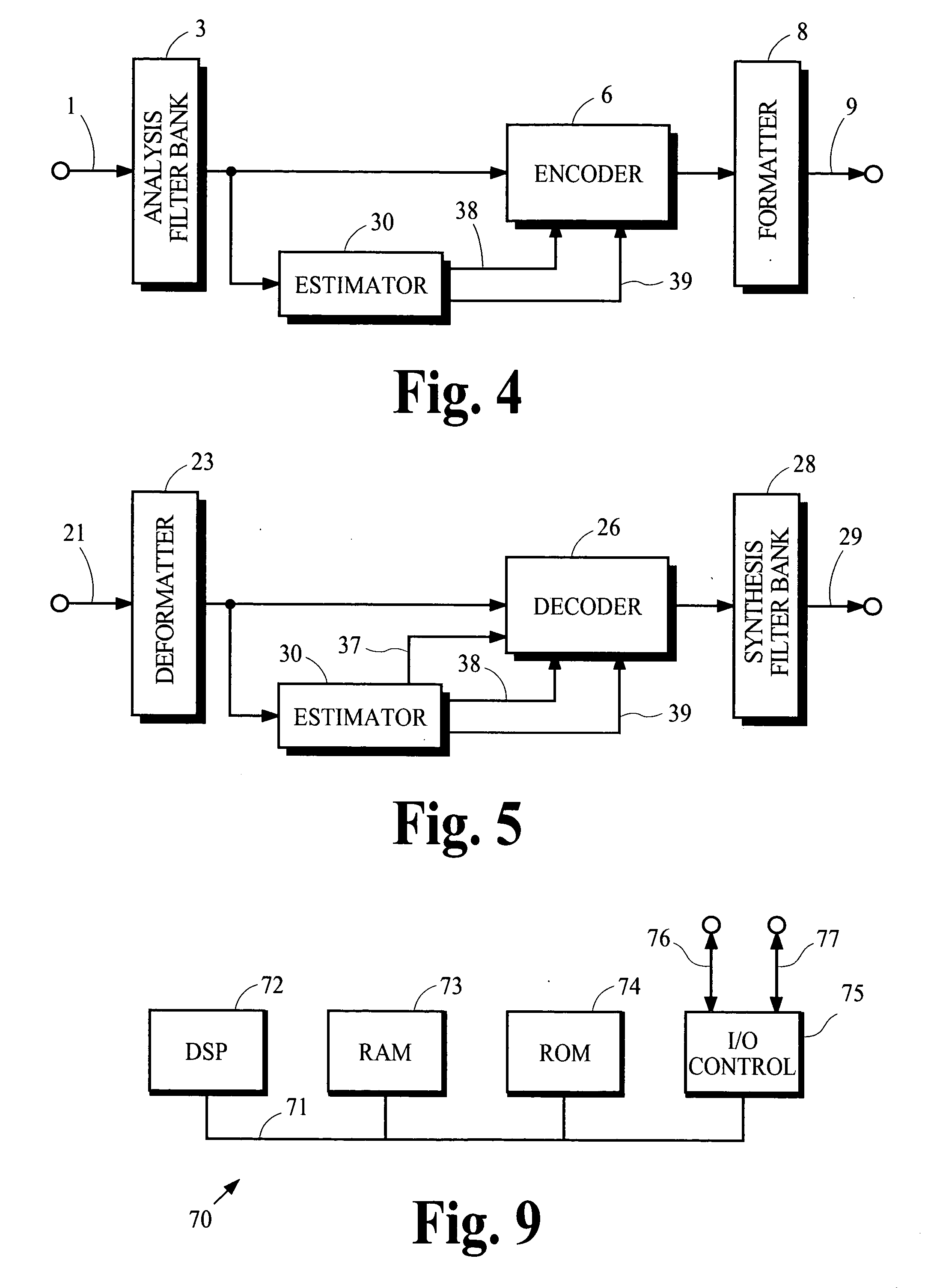A coding process that adapts the quantizing resolution more coarsely can reduce information requirements to a greater extent but it also introduces higher levels of quantization error or “quantization
noise” into the signal.
A coding
system using models known to provide inaccurate predictions of perceptibility cannot reliably ensure quantization
noise is rendered imperceptible unless a finer quantizing resolution is used than would otherwise be required if a more accurate prediction was available.
Unfortunately, some coding systems use particular types of filter banks to derive an expression of spectral components that make it difficult to obtain accurate measures of
spectral component magnitude or phase.
Although the DFT or the DCT, for example, generate one
spectral component for each sample in a source signal segment, DFT and DCT analysis / synthesis systems in many coding applications do not provide critical sampling because the analysis transform is applied to a sequence of overlapping signal segments.
The overlap allows use of non-rectangular shaped window functions that improve analysis
filter bank frequency response characteristics and eliminate blocking artifacts; however, the overlap also prevents
perfect reconstruction with critical sampling because the analysis
filter bank must generate more coefficient values than the number of source signal samples.
This loss of critical sampling increases the information requirements of the encoded signal.
Unfortunately, these filter banks are similar to the DCT in that the spectral components of the MDCT represent the spectral component of a source signal in only a subspace of the
multidimensional space required to accurately convey spectral magnitude and phase.
Accurate measures of spectral magnitude or phase cannot be obtained easily from the spectral components or transform coefficients generated by the MDCT; therefore, the coding performance of many systems that use the MDCT filter
bank is suboptimal because the prediction accuracy of perceptual models is degraded and the preservation of spectral component magnitudes by synthesizing processes is impaired.
Prior attempts to avoid this deficiency of various filter banks like the MDCT and DCT filter banks have not been satisfactory for a variety of reasons.
This technique is not attractive for at least two reasons: (1) considerable computational resources are required in the
encoder to implement the additional FFT filter
bank needed to derive the measures of magnitude, and (2) the
processing to obtain accurate measures of magnitude are performed in the
encoder; therefore additional bandwidth is required by the encoded signal to convey these measures of spectral component magnitude to the decoder.
This technique also is not attractive because considerable computational resources are required in the decoder to implement the analysis filter
bank needed to obtain the second set of spectral components.
This technique overcomes the disadvantages mentioned above but it also is not satisfactory for typical coding applications because it is applicable only for a very simple source signal that has only one sinusoid.
Another technique, which is disclosed in U.S.
patent application Ser. No. 09 / 948,053, publication number U.S. 2003 / 0093282 A1 published May 15, 2003, is able to derive DFT coefficients from MDCT coefficients; however, the disclosed technique does not obtain measures of magnitude or phase for spectral components represented by the MDCT coefficients themselves.
Furthermore, the disclosed technique does not use measures of magnitude or phase to adapt processes for encoding or decoding information that represents the MDCT coefficients.
 Login to View More
Login to View More  Login to View More
Login to View More 


